Carmen Clark, southern Alabama branch manager for Fairhope, Ala.-based Havard Pest Control, has more than a decade of experience in termite control. But as many pest management professionals (PMPs) can attest, he’s never too experienced to learn something new — and that happened April 9, when he encountered an aerial colony of Formosan termites (Coptotermes formosanus).
“When dealing with the very aggressive Formosan termites, you have to treat aggressively,” he explains. “The key to victory is to treat every void possible. Prior to any treatment, you have to step back and break down the structure mentally. Visualize the voids and entry points that the termites will use to gain access to the home.”
Clark says the residential structure was about 15 years old and in fair condition. “After my initial inspection and evaluation, I explained what the procedure would involve and gave the customer a proposal. She accepted and is a happy customer now.”
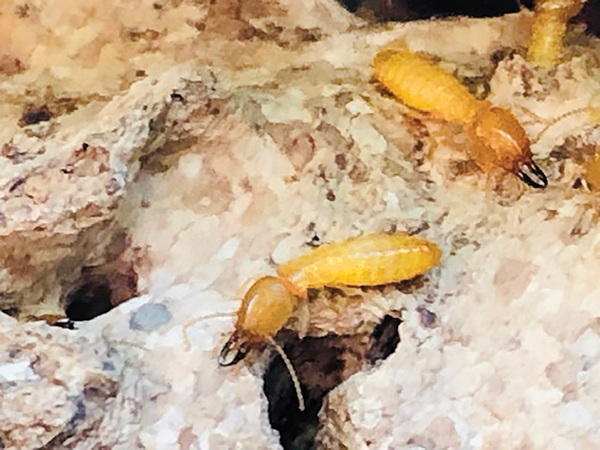
PHOTO: CARMEN CLARK
Clark says it’s hard to tell how long this large, aerial colony had been active, although he estimates it was about seven months: “The only evidence of activity were small blowout holes in the corner of the living room ceiling. The customer noticed some dirt in the corner. After inspecting and probing, I followed the signs, which led me behind her vinyl siding on the home’s exterior. Once I removed the metal flashing and sections of the vinyl siding, I could finally see the extent of her infestation.”
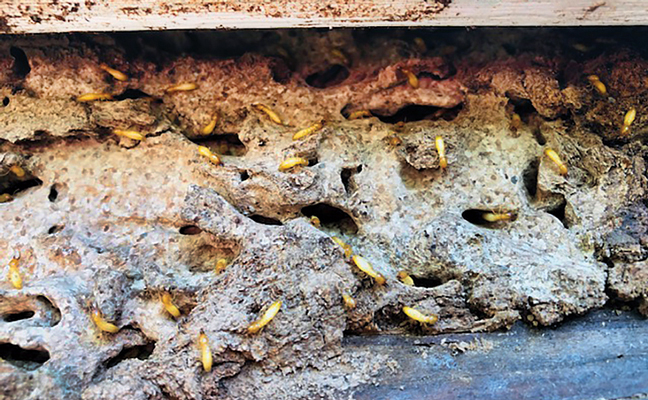
PHOTO: CARMEN CLARK
“The scope of damage caused was accelerated, thanks to conducive moisture conditions,” Clark said. “Silicone and flashing that sealed the vinyl siding had deteriorated to allow water under and behind the exterior wall. The infestation started on the exterior wall, then worked into the interior walls and ceiling in the living room.” An uncorrected condition like that is “like adding fuel to a burning fire,” he adds.
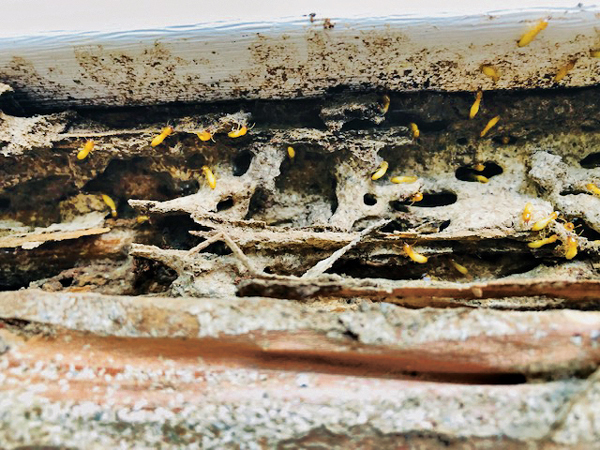
PHOTO: CARMEN CLARK
Clark removed the termite carton from the wall and scraped the wood. He then drilled numerous holes into the exterior wall along the areas of activity, and injected foam into the wall void.
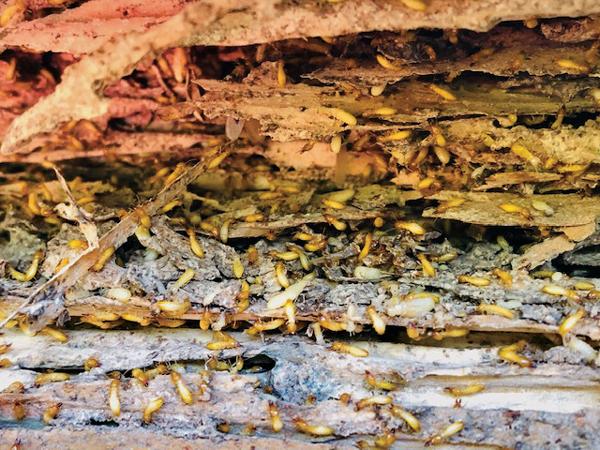
PHOTO: CARMEN CLARK
To apply liquid termiticide behind the brick veneer on the exterior wall, Clark drilled and treated the masonry voids.
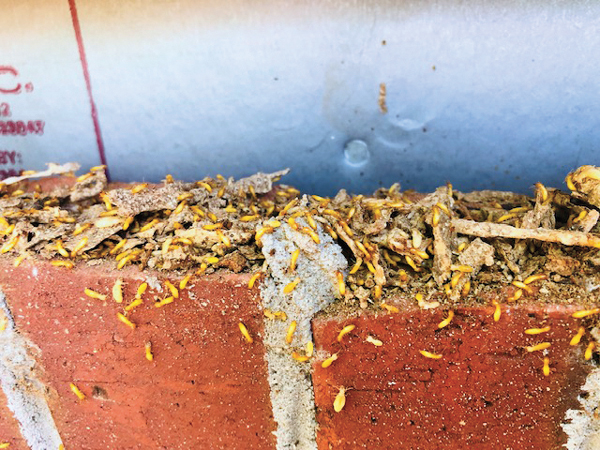
PHOTO: CARMEN CLARK
Clark down-drilled the driveway slab along the base of the veneer on the exterior, and completed sub-slab injections with liquid termiticide. He did the same on the dirt-filled porch. Lastly, Clark trenched the soil along the exterior foundation wall, and treated with liquid termiticide.
Leave A Comment